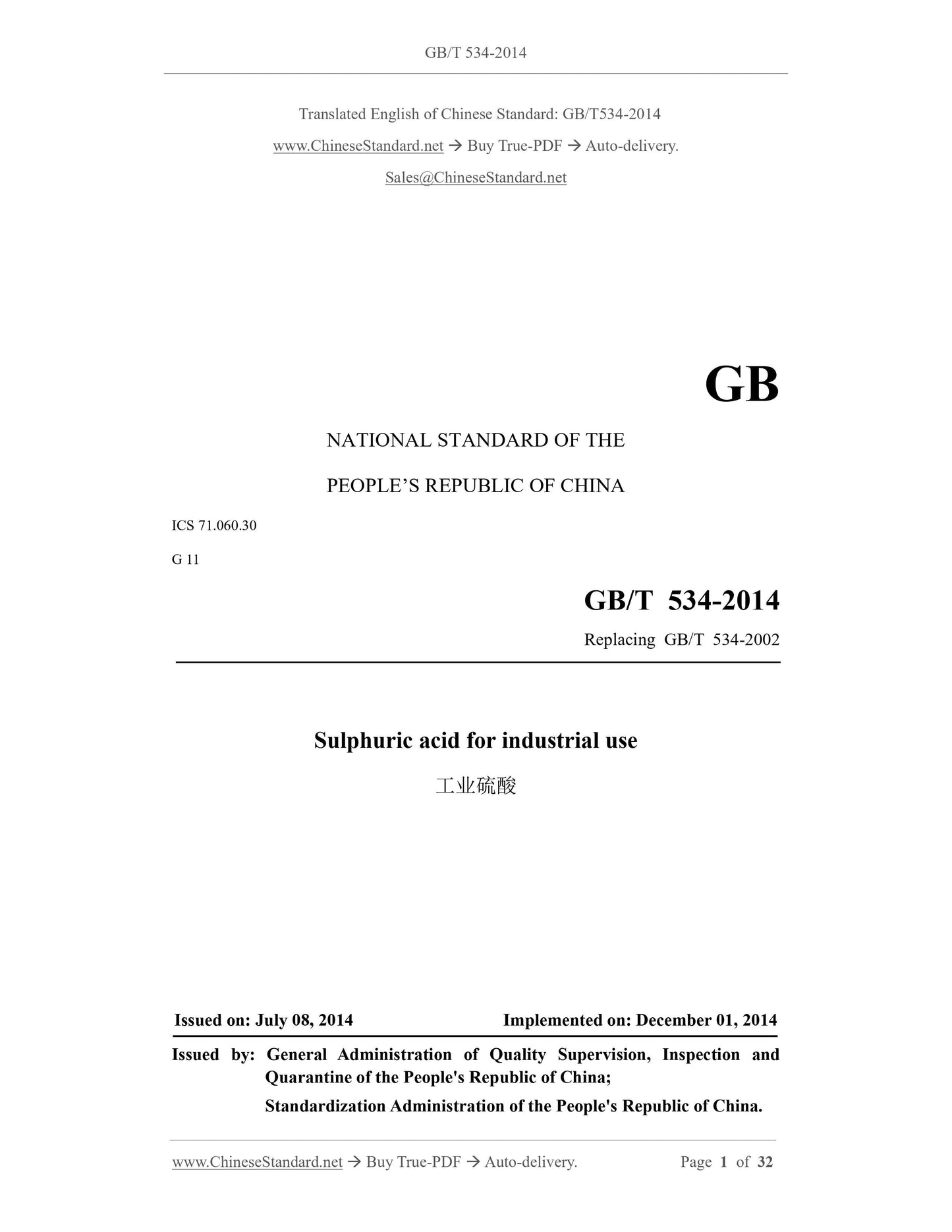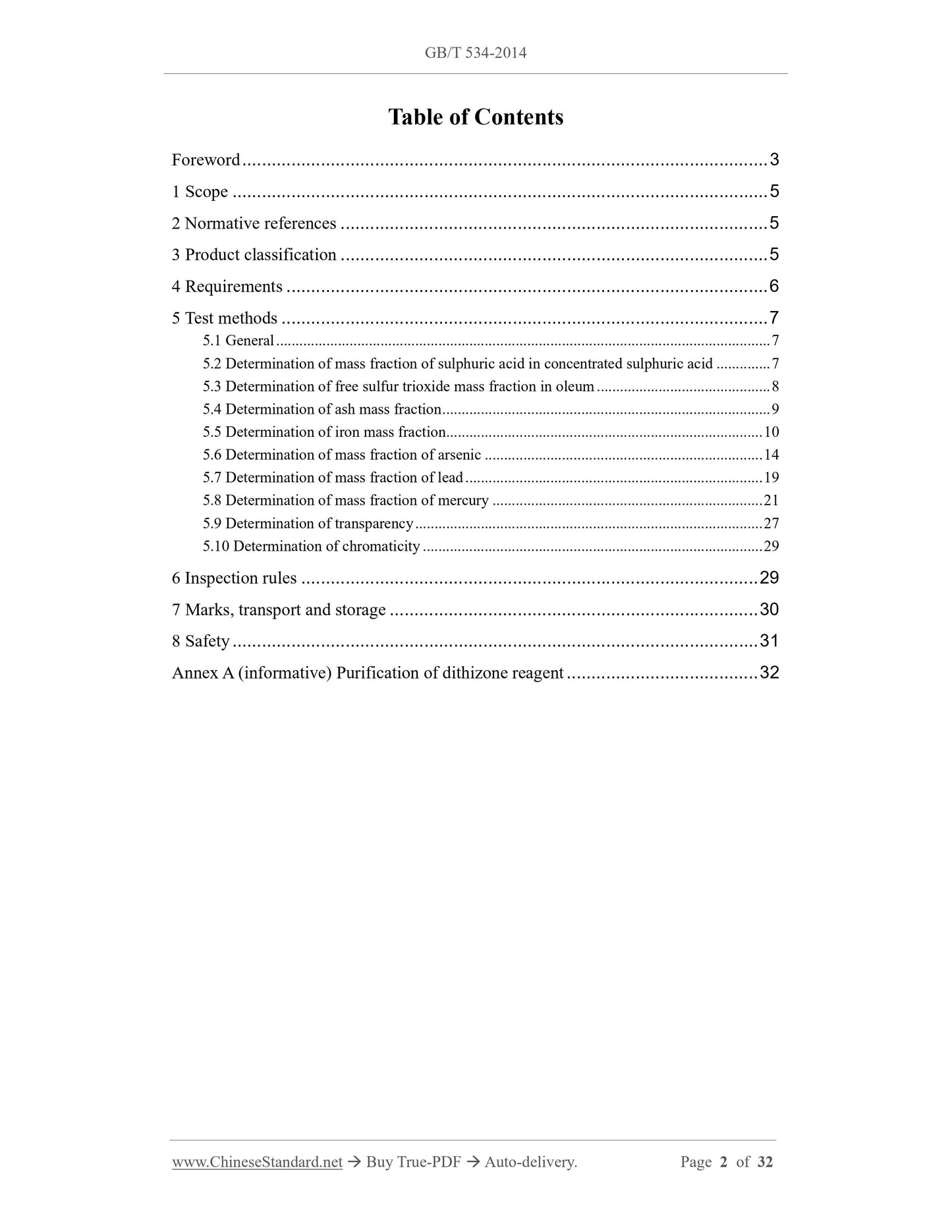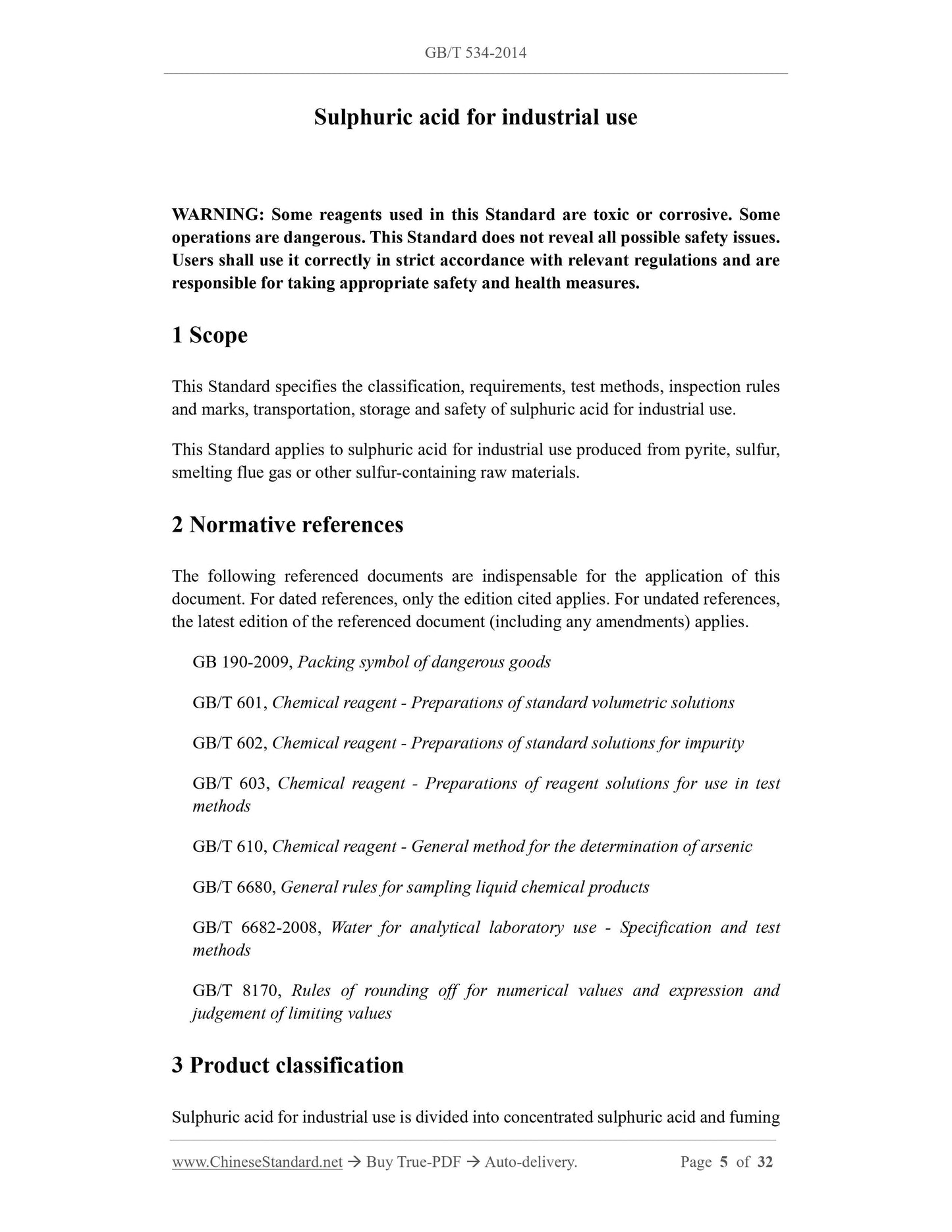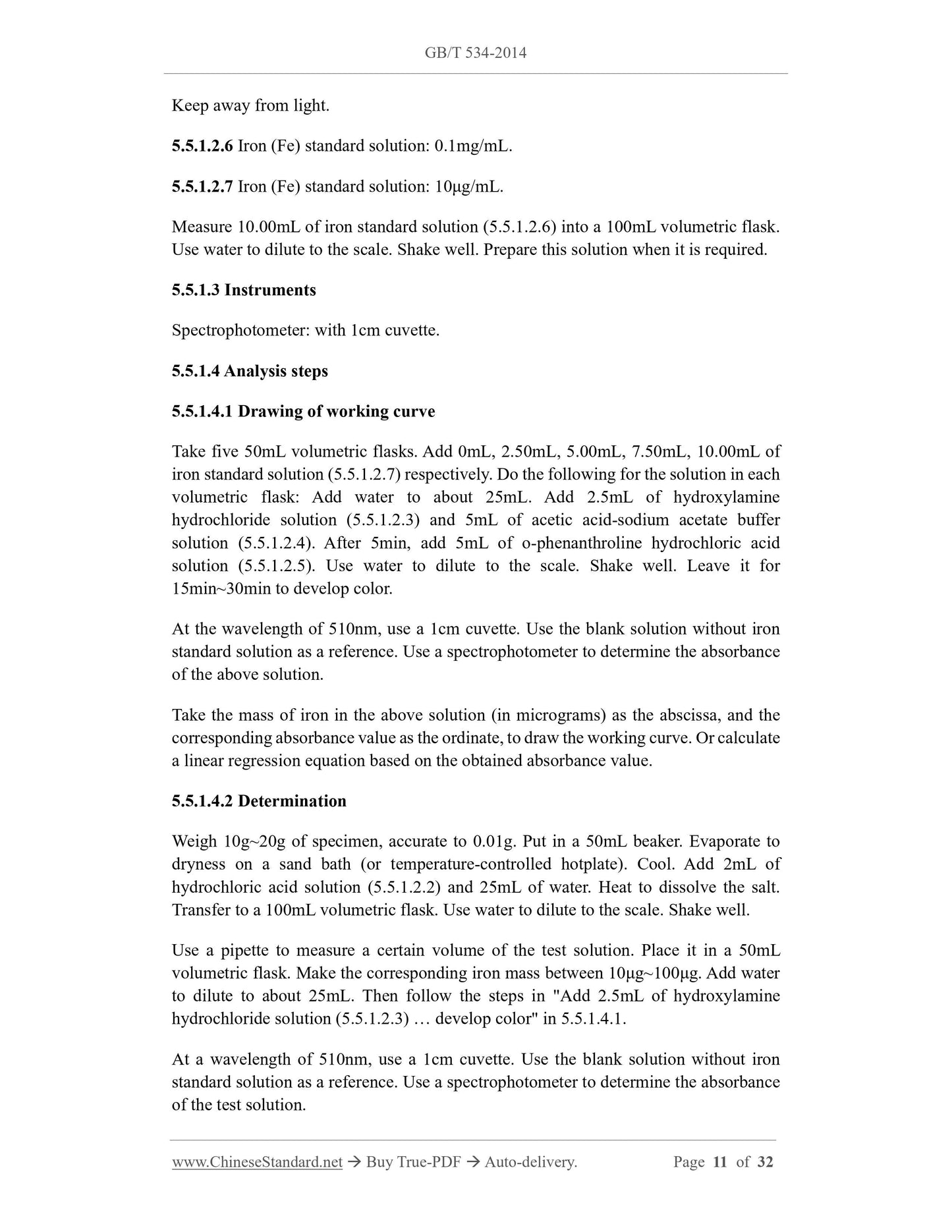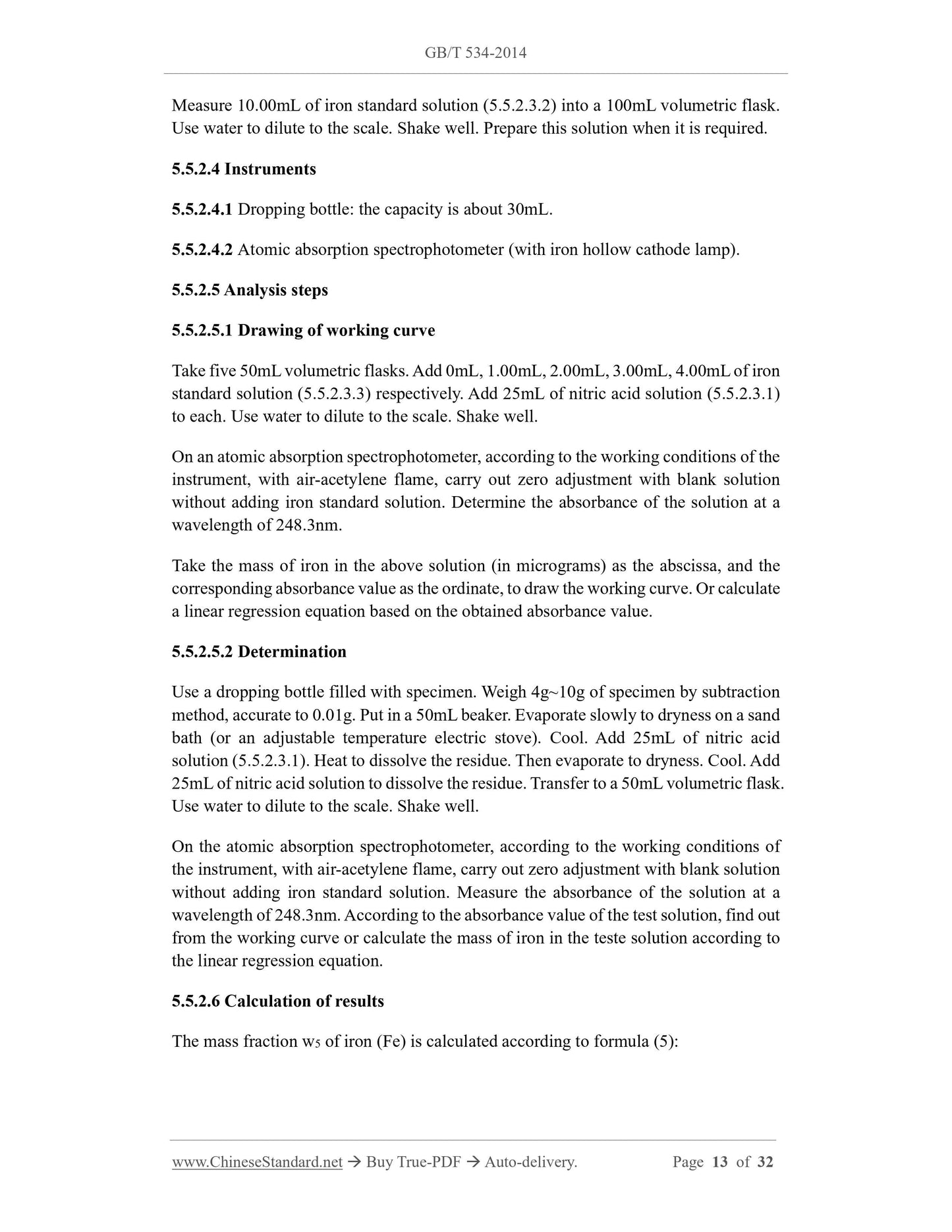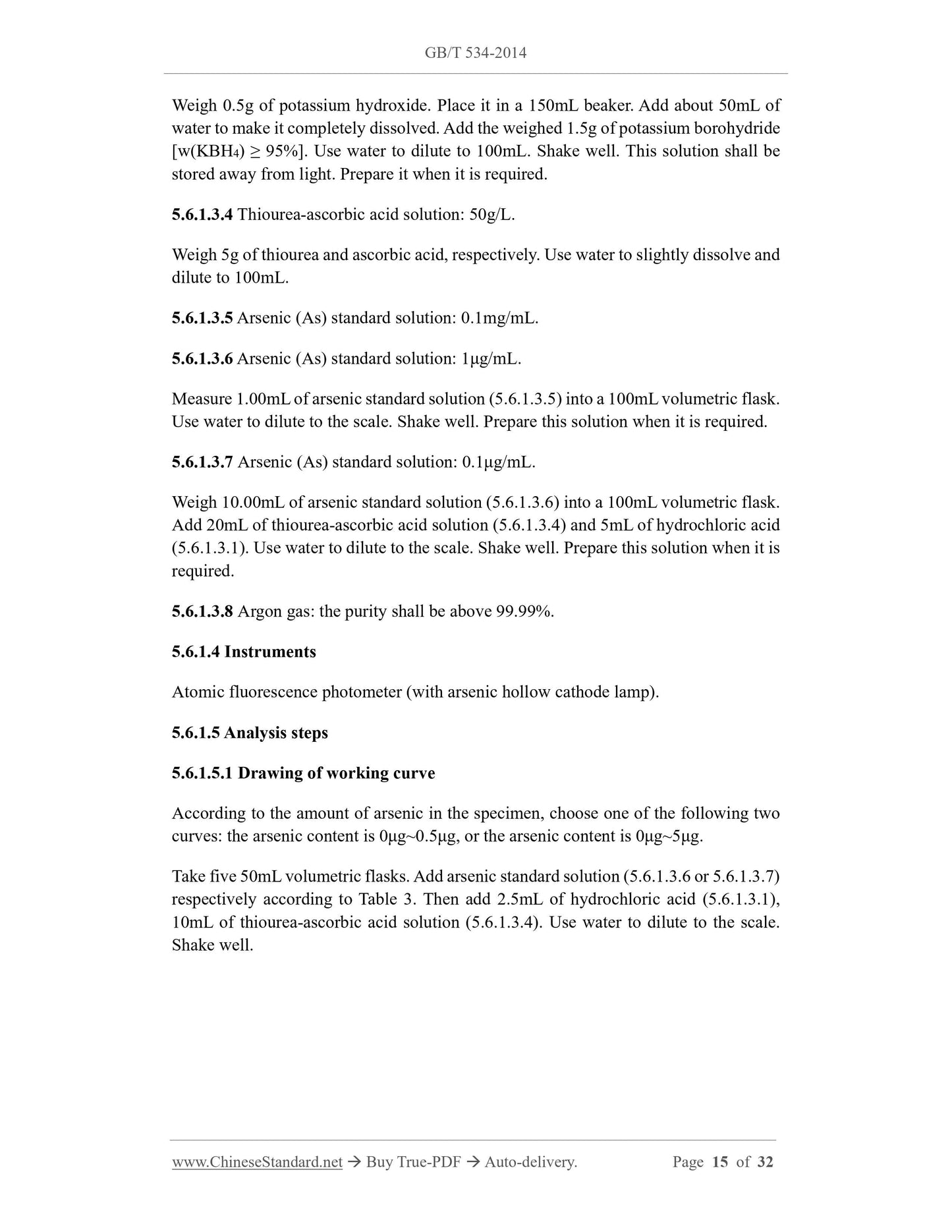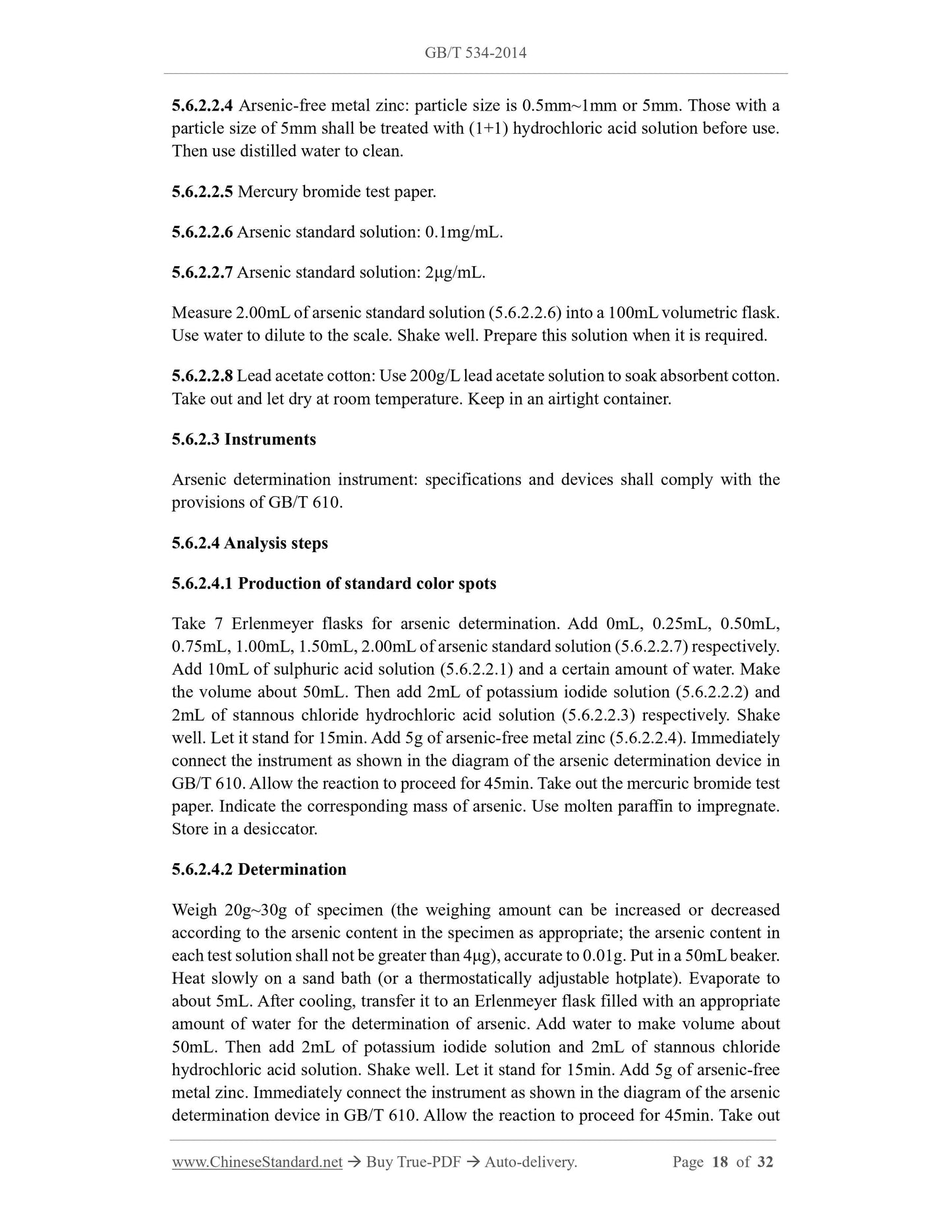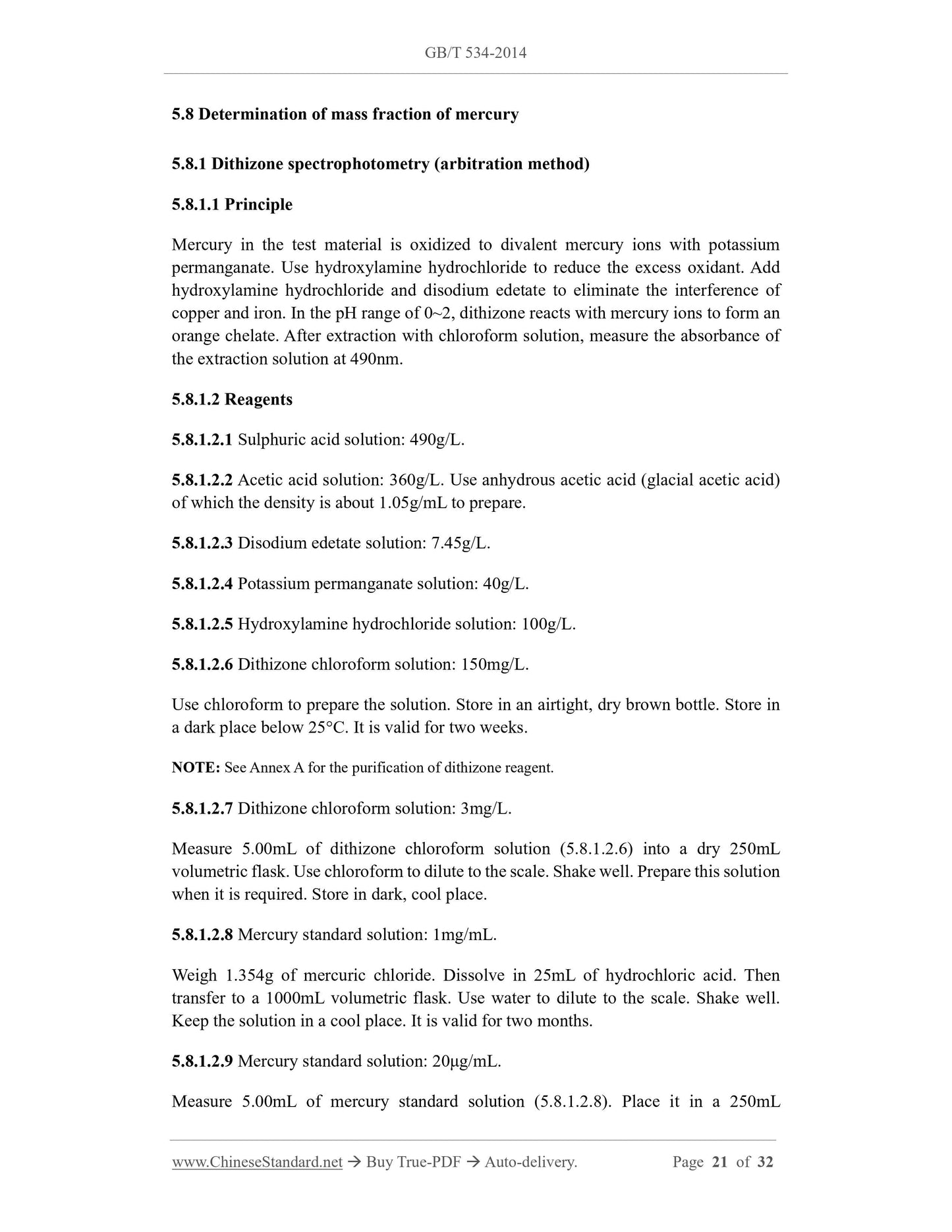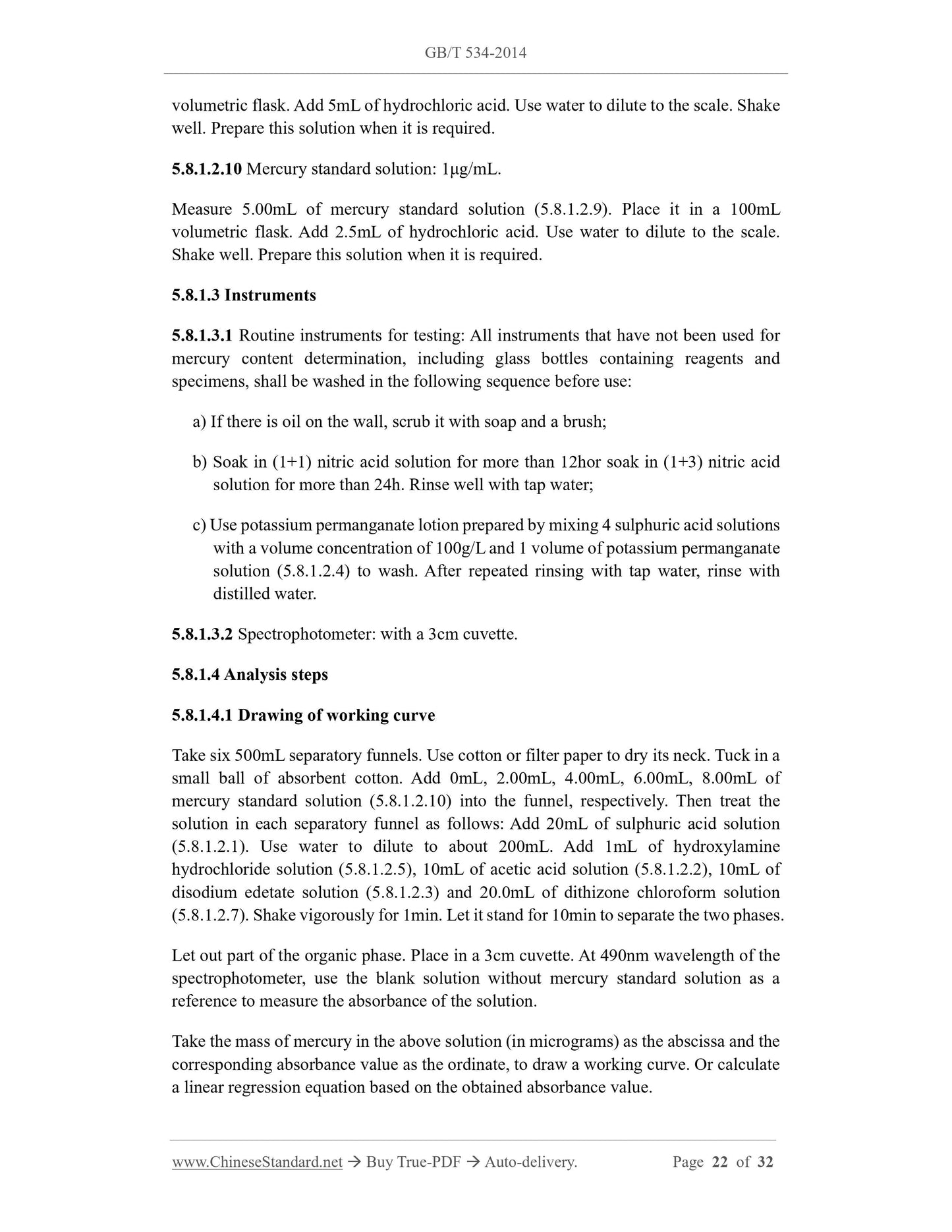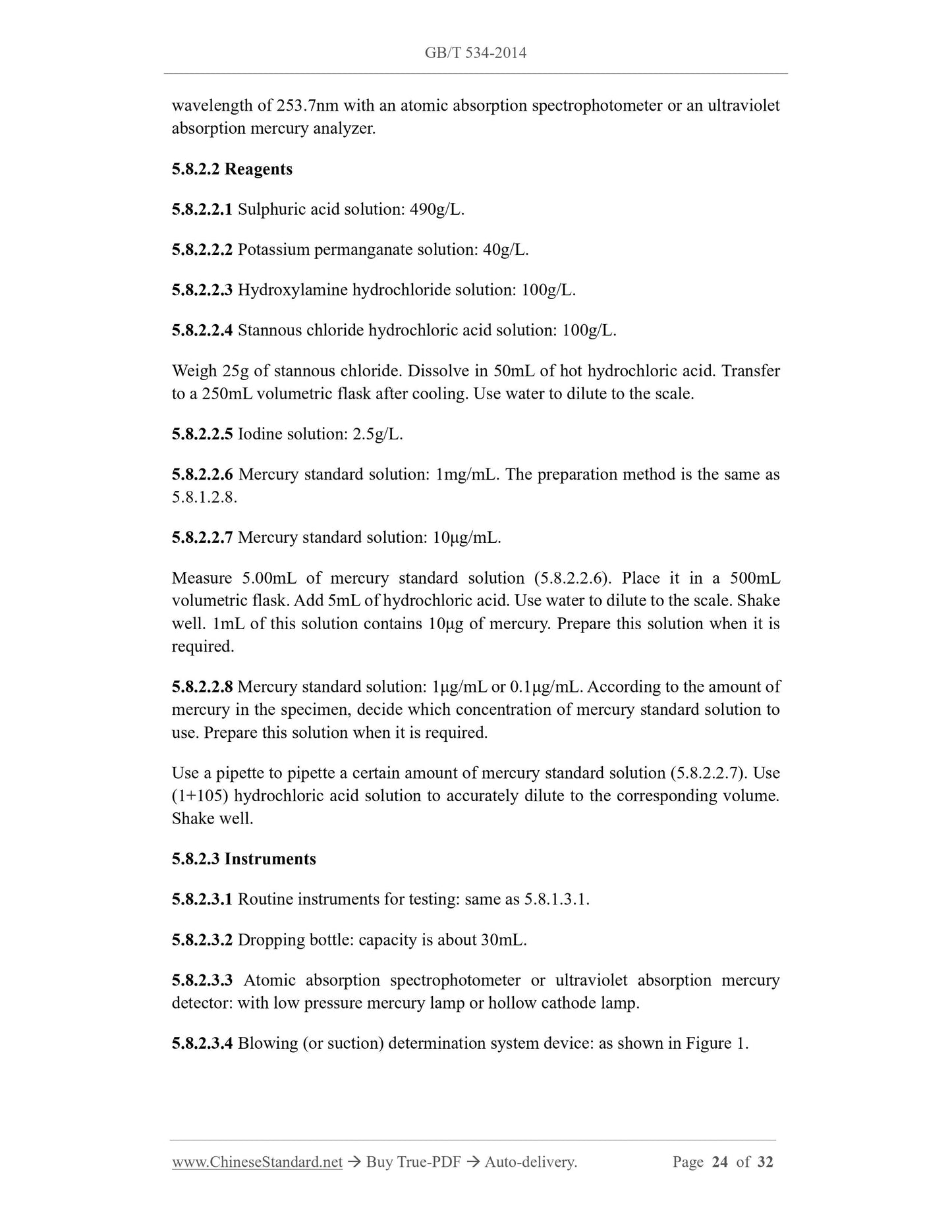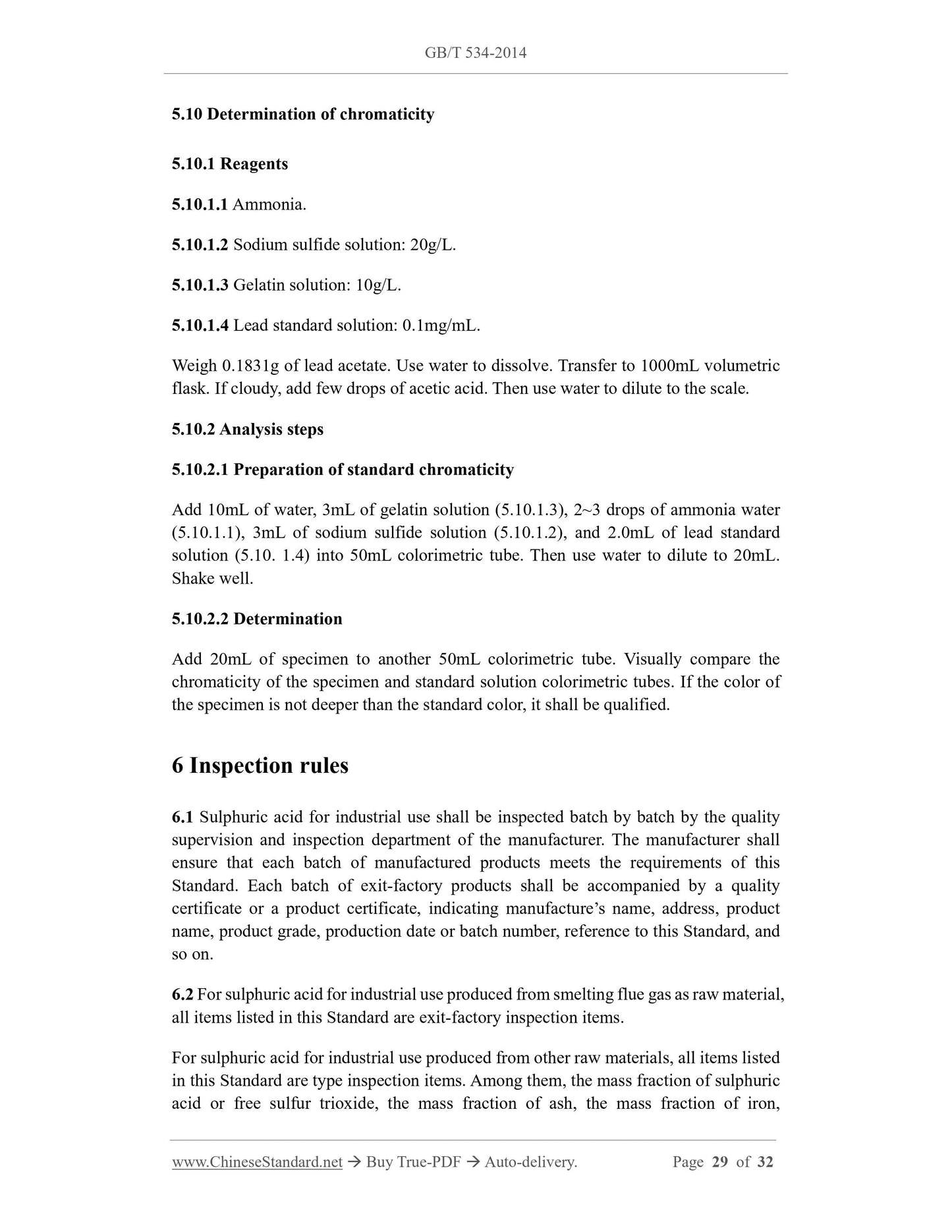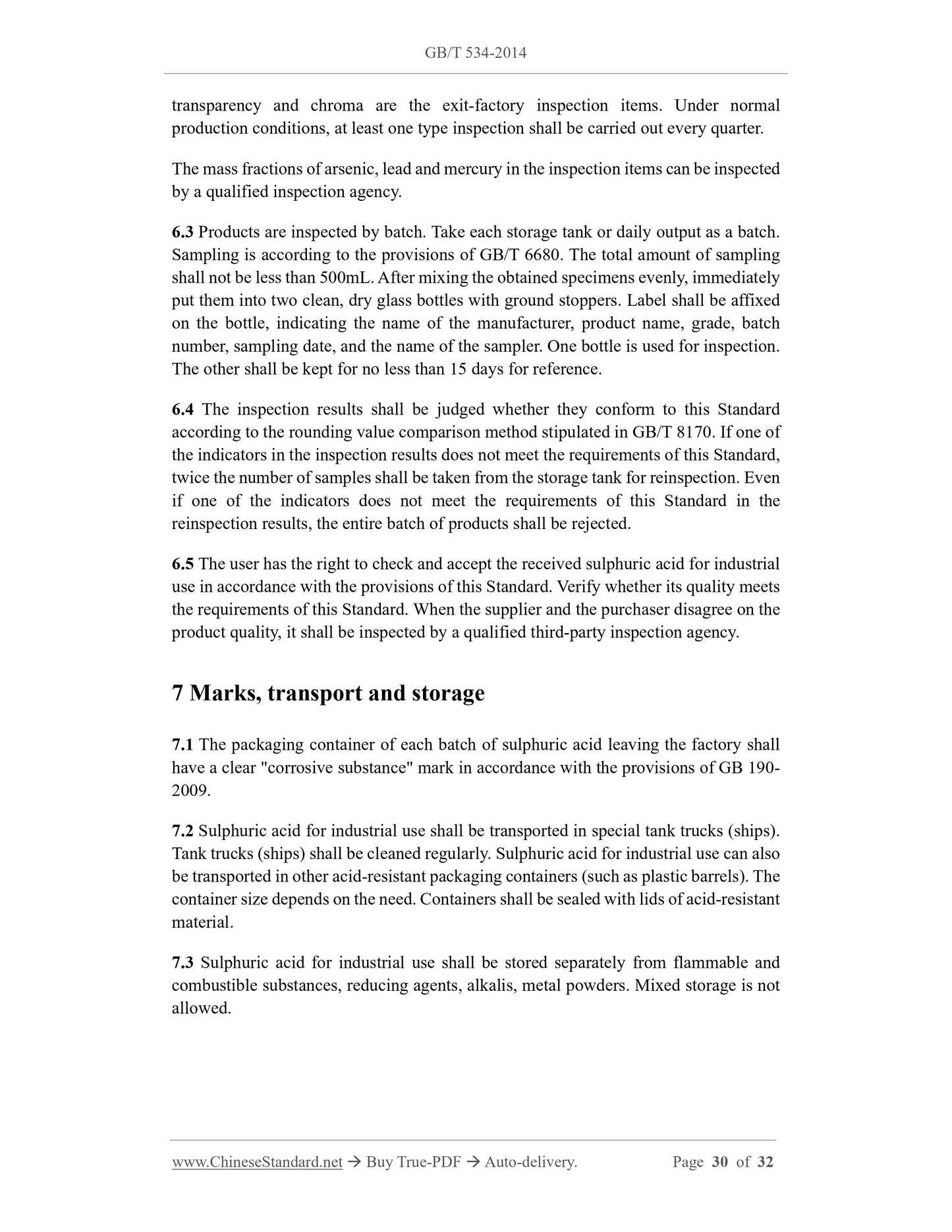1
/
of
12
www.ChineseStandard.us -- Field Test Asia Pte. Ltd.
GB/T 534-2014 English PDF (GB/T534-2014)
GB/T 534-2014 English PDF (GB/T534-2014)
Regular price
$365.00
Regular price
Sale price
$365.00
Unit price
/
per
Shipping calculated at checkout.
Couldn't load pickup availability
GB/T 534-2014: Sulphuric acid for industrial use
Delivery: 9 seconds. Download (and Email) true-PDF + Invoice.Get Quotation: Click GB/T 534-2014 (Self-service in 1-minute)
Newer / historical versions: GB/T 534-2014
Preview True-PDF
Scope
This Standard specifies the classification, requirements, test methods, inspection rulesand marks, transportation, storage and safety of sulphuric acid for industrial use.
This Standard applies to sulphuric acid for industrial use produced from pyrite, sulfur,
smelting flue gas or other sulfur-containing raw materials.
Basic Data
| Standard ID | GB/T 534-2014 (GB/T534-2014) |
| Description (Translated English) | Sulphuric acid for industrial use |
| Sector / Industry | National Standard (Recommended) |
| Classification of Chinese Standard | G11 |
| Classification of International Standard | 71.060.30 |
| Word Count Estimation | 22,270 |
| Date of Issue | 7/8/2014 |
| Date of Implementation | 12/1/2014 |
| Older Standard (superseded by this standard) | GB/T 534-2002 |
| Quoted Standard | GB 190-2009; GB/T 601; GB/T 602; GB/T 603; GB/T 610; GB/T 6680; GB/T 6682-2008; GB/T 8170 |
| Regulation (derived from) | 2014 National Standards Bulletin No. 18 |
| Issuing agency(ies) | General Administration of Quality Supervision, Inspection and Quarantine of the People's Republic of China, Standardization Administration of the People's Republic of China |
| Summary | This standard specifies the classification of industrial sulfuric acid, requirements, test methods, inspection rules and signs, transportation, storage, and security. This standard applies to the pyrite, sulfur, or other sulfur-containing smelt smoke prod |
Share
